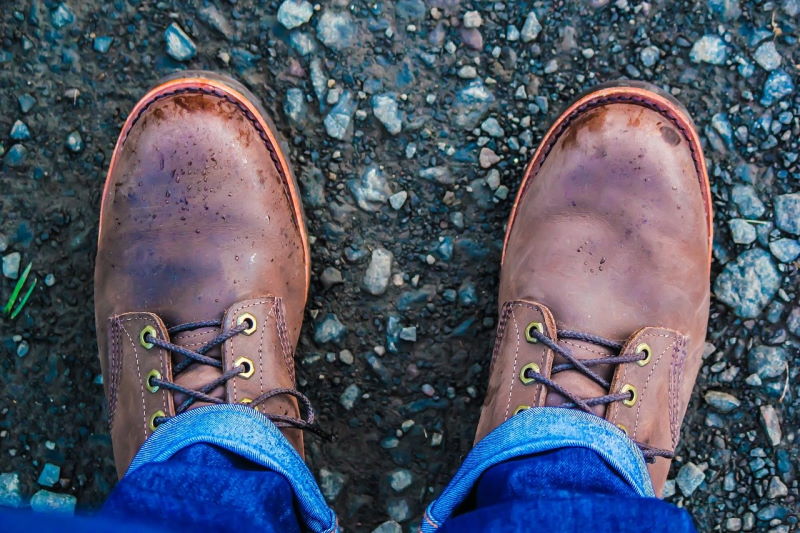A well-built pair of work boots should last at last approximately one or two years. Unfortunately, most don’t last that long, due to poor maintenance. As much as your boots might be tough, they will always pay the price as they protect your feet against mud, water, snow, salt, and other harsh elements. If you find yourself going back to the shop to buy a new pair of work boots after every few months, there is a high chance that you are not taking proper care of them. Here are some tips that can help to improve the lifespan of your work boots.

Break Them in Properly
After investing in a new pair of work boots, you will need to spend some time breaking them in. Even if you bought your actual size, new work boots, especially those made of leather will only fit your feet comfortably after several wears. Going to work with boots that have not been completely broken into, might lead to various problems. For instance, it will be hard to fully focus on your job, if your feet are aching. Also, if your work boots have not been completely broken into, they might lead to various foot problems like stress fractures, hammertoes, corns, calluses, bunions, as well as plantar fasciitis, among others. Furthermore, if your work boots are not completely broken into, you might be forced to change your walking style to minimize the pain. As a result, your weight will not be uniformly spread out, which might lead to premature wear and tear. So, how do you break in a new pair of work boots?
- Walk around in them: Your work boots will take some time before they conform to your feet. And walking around in them is one of the easiest ways of breaking them in. However, that doesn’t mean that you should wear them the entire day. Instead, you should wear them for 20 to 30 minutes at a time, when they are new. You can wear them when doing house chores like cooking or when you are watching the TV. And if they become uncomfortable, you simply remove them.
- Use a leather conditioner: When it comes to breaking in a new pair of work boots, some people apply heat in a bid to fasten the process. While this process can work, it will definitely reduce the lifespan of the boots. On the other hand, applying a leather conditioner will soften the leather, without any negative consequences. Leather conditioners are readily available in most retail stores. Make sure you use a product that is recommended for your boots.
- Wear them frequently: The more you wear your work boots, the faster they will adapt to the contours and shape of your feet. If you are ready to take your boots to work, you can start by wearing them in the mornings and then switching to your older work boots for the afternoon shift. With time, these boots will conform to your feet and the pain will disappear.
While there are various ways of breaking in a new pair of work boots, some methods might end up damaging your boots, thus shortening their lifespan. If you want to maximize the lifespan of your boots, then you should avoid applying heat directly to them, soaking them in water or using force on them. As noted above, applying heat directly to your boots can make the leather to harden and crack, thus opening room for further damage. On the other hand, soaking them in water for prolonged periods could warp, shrink and damage the leather. While your leather boots can comfortably handle a wide range of wet conditions, that is not the same as soaking them overnight in a bucketful of water.
Clean Your Work Boots Regularly
As much as dirt might be an inevitable part of your job, it doesn’t have to remain caked on your work boots forever. Cleaning your boots regularly will help to extend their longevity. When cleaning the boots, you can use a piece of cloth or a soft brush. Avoid brushes that have hard bristles, as they might leave scratches on the boots’ surface. If you are using a commercial cleaning solution, make sure you follow directions to the letter. If you fail to do so, then you risk damaging your valuable boots. Apart from cleaning their exterior, you also need to clean the inside of your work boots. Cleaning the interior of the boots will help to get rid of unpleasant odors. It will also help to remove bacteria, fungi and other pathogens that might lead to foot infections.
Once you’ve finished cleaning them inside and outside, you should then apply a leather conditioner. Applying a conditioner will help to keep your work boots hydrated. After applying the conditioner, allow the boots to sit for around 15 minutes, and then buff them until you are satisfied. Now that your boots are clean, conditioned and they are not smelling, you should allow them to air-dry outside. After 48 hours or so, your work boots will be ready for your feet. Cleaning and conditioning the boots should be a regular thing.
Rotate Them
When you find a pair of work boots that you love, you might be tempted to wear them every day. And you are not the only one. However, it’s best to rotate your work boots. Rotating your work boots will extend their lifespan. When you wear the same pair of shoes every day, the outer soles will start to form a wear pattern, based on your walking style, gait, landing style, and weight. After a few months or so, your favorite pair of work boots will eventually lose their structure. And when that happens, they will not provide the required level of support and protection.
Also, rotating your work boots gives them ample time to dry out completely, helping to prevent the growth of fungus and mold. If you wear your work boots for many hours, your feet will eventually sweat, and that sweat will accumulate in those shoes. If the shoes are not given enough time to dry, that sweat will eventually start to break down key components of your shoes, leading to premature wear and tear.
Accumulation of moisture can also cause blisters or lead to athlete’s foot. The fungi that cause athlete’s foot, thrive in wet, warm places, like underneath the balls of your feet or in between your toes. You will catch athlete’s foot if you touch a contaminated surface or have direct contact with an infected person. However, even after infection, this virus will still need the right conditions to flourish. If you rotate your work shoes every other day, you will prevent its growth by allowing your shoes to dry out completely. As you can see, alternating your work boots will not only extend their lifespan but you will also be protecting your feet against infections.
Waterproof Your Boots
Whether you work outdoors or indoors, it’s important to waterproof your boots regularly to ensure maximum performance and comfort as well as enhanced longevity. The good news is that you can easily waterproof any pair of work boots, from the comfort of your home. You will just need a couple of materials and tools for this job. But before you start the waterproofing process, it’s important to pay attention to the material that your work boots are made of. Different materials require different waterproofing products. For instance, nubuck leather may require a different product from the one that you can use to waterproof full-grain leather boots. And if you are not sure what your boots are made of, then you should check the manufacturer’s website. From mink oils to beeswax, waterproofing sprays to aerosol re-proofers, you have a wide range of waterproofing agents to choose from. Mink oil and beeswax are mainly used on full-grain leather boots. They provide the best protection against moisture. For nubuck, suede and fabric boots, you should use waterproofing sprays. You should never use beeswax to waterproof suede and nubuck leather boots since it’s designed to be used on smooth leather surfaces. Once you’ve finished the waterproofing process, let the boots sit outside until they dry completely.
Store Them Properly
Work boots should be protected from water, dust, and direct sunlight. If your work boots are constantly exposed to these elements, they will warp and fade, among other forms of damage. It’s, therefore, important to store your work boots properly, if you want to improve their lifespan. Before storing your boots, make sure they are clean and dry. Dust, dirt and other elements on the shoes might cause their material to degrade and lose integrity over time. Even if you will just be storing them for one night, you should get into the habit of cleaning them before putting them away.
If you will be storing your work boots for a month or so, then you need to invest in some quality shoe trees. Shoe trees made of alder and cedar are highly recommended. They come with moisture-wicking capabilities, which means they will remove moisture from your work boots and their surroundings. Apart from removing moisture, alder or cedar shoe trees will also help to minimize creasing while maximizing the lifespan of your boots. Stuffing your boots with acid-free paper can also help to maintain their shape, in case you don’t have shoe trees.
Closing Remarks
Your work boots’ lifespan is dependent on their use and maintenance. Therefore, if you want to maximize their lifespan, you should make sure you take proper care of them by cleaning them regularly, waterproofing them, conditioning them and storing them properly.




0 comments